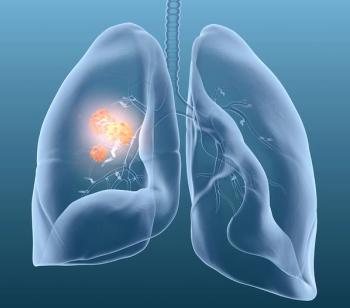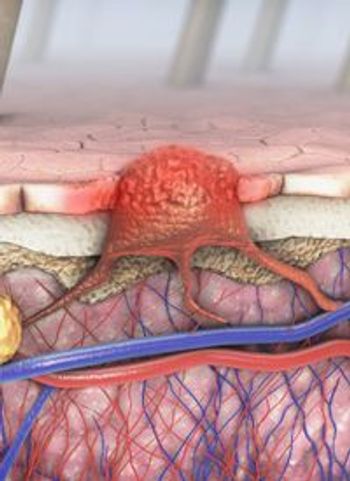
Niraparib Plus Ipilimumab Yields Enhanced 6-Month PFS vs Niraparib Plus Nivolumab in Advanced Pancreatic Cancer
Results from a phase 1b/2 trial indicated that niraparib plus nivolumab yielded superior progression-free survival at 6 months vs niraparib and ipilimumab for patients with platinum-sensitive advanced pancreatic cancer.
Niraparib (Zejula) plus ipilimumab (Yervoy) yielded superior progression-free survival (PFS) at 6 months compared with niraparib plus nivolumab (Opdivo) for patients with advanced pancreatic cancer who had not progressed at least 16 weeks follow platinum-based therapy, according to results from a phase 1b/2 trial (NCT03404960) published in The Lancet Oncology.
The 6 months PFS was 20.6% (95% CI, 8.3%-32.9%; P = .0002) in the niraparib plus nivolumab group and 59.6% (95% CI, 44.3%-74.9%; P = .045) in the niraparib plus ipilimumab group. The median follow-up was 23.0 months.
A total of 91 patients were randomly assigned to either the niraparib plus nivolumab group (n = 46) or the niraparib plus ipilimumab group (n = 45).Overall, 84 patients were evaluable for the primary end point. Of those included in the efficacy analysis, 96% of patients had germline testing results available and 51% had undergone clinical somatic next-generation sequencing.
In the niraparib and nivolumab group, 16% of patients had a germline or somatic mutation in BRCA1/2 or PALB2 vs 18% in the niraparib and ipilimumab group. In patients with a DNA damage repair variant 56% vs 50% of those in the niraparib plus nivolumab and niraparib plus ipilimumab groups had a personal or family history of BRCA1/2-related cancer.
In total, 15 patients in the niraparib plus nivolumab group and 14 in the niraparib plus ipilimumab group were rechallenged with platinum-based chemotherapy. In this population 40% vs 57% had achieved stable disease was observed in the niraparib plus nivolumab arm vs the niraparib plus ipilimumab arm, respectively.
Patients did not experience any dose-limiting toxicities in the phase 1b portion of the study. Patients were treated with 200 mg of niraparib per day and 240 mg of nivolumab every 2 weeks or 200 mg of nivolumab every 2 weeks plus 3 mg/kg of ipilimumab.
At the time of the data cutoff, 55 patients had died, and the median overall survival was 13.2 months (95% CI, 8.1-16.7) in the niraparib plus nivolumab group vs 17.3 months (95% CI, 12.8-21.9) in the niraparib plus ipilimumab group. In the niraparib plus nivolumab group, the objective response rate was 7.7% (95% CI, 1.5%-19.5%) compared with 15.4% (95% CI, 5.9%-30.5%) in the niraparib plus ipilimumab group.
The most common treatment-related adverse effects (TRAEs) in the niraparib plus nivolumab group were thrombocytopenia (30%), arthralgia (26%), nausea (24%), and fatigue (24%). In the nivolumab plus ipilimumab group, the most common TRAEs were thrombocytopenia (44%), anemia (42%), fatigue (42%), nausea (40%), aspartate aminotransferase increase (36%), rash (33%), and alanine aminotransferase increase (30%).
Grade 3 or higher AEs included hypertension (8%), anemia (4%), and thrombocytopenia (4%) in the niraparib plus nivolumab arm compared with fatigue (14%), anemia (11%), and hypertension (9%) were observed between and niraparib plus ipilimumab groups, respectively.
Nivolumab was discontinued prematurally in 11% of patients due to AEs, and 24% discontinued ipilimumab. Discontinuation of niraparib was necessary in 5 patients because of thrombocytopenia, anemia, and fatigue. Of note, no patient discontinued treatment with both investigational drugs because of AEs.
Serious treatment-related AEs occurred in 11% of patients vs 24% in the niraparib plus nivolumab group vs the niraparib plus ipilimumab group, respectively. Grade 3 immune-mediate AEs included rash (n = 3), pneumonitis (n = 2), and colitis (n = 1) in the niraparib plus ipilimumab. In the niraparib plus nivolumab group, 1 patient experienced grade 3 immune-mediated colitis.
Overall, 55 patients had died, none of which were related to treatment.
Reference
Reiss KA, Mick R, Teitelbaum U, et al. Niraparib plus nivolumab or niraparib plus ipilimumab in patients with platinum-sensitive advanced pancreatic cancer: a randomised, phase 1b/2 trial. Lancet Oncol. 2022;23(8):1009-1020. doi:10.1016/S1470-2045(22)00369-2
Newsletter
Stay up to date on recent advances in the multidisciplinary approach to cancer.
































































































